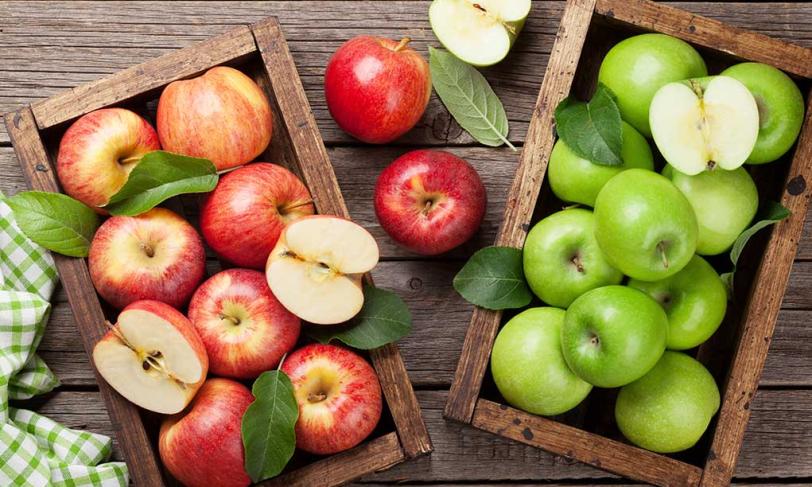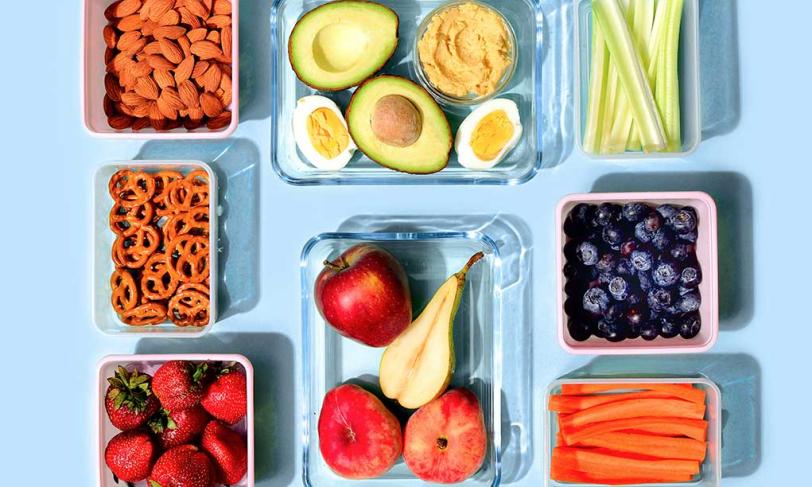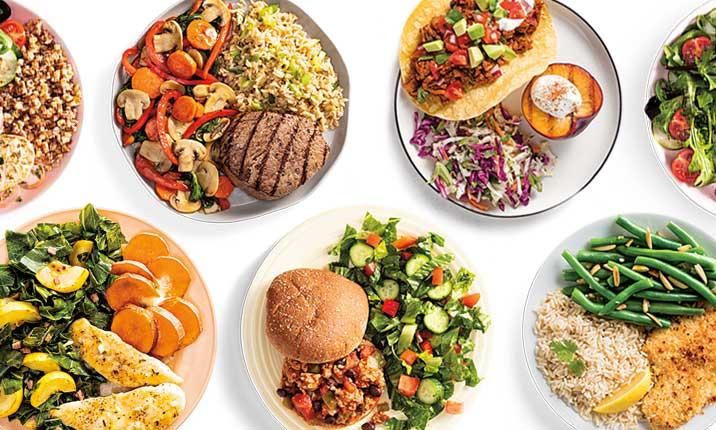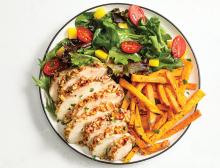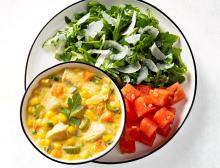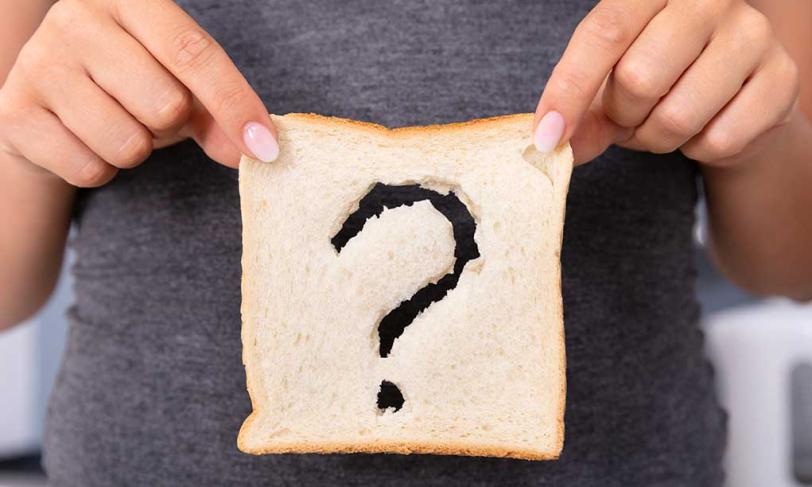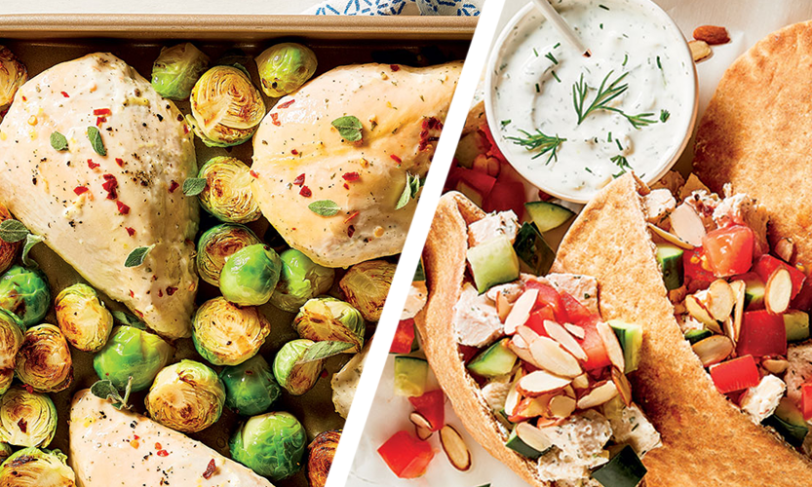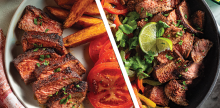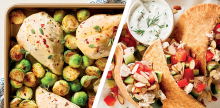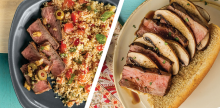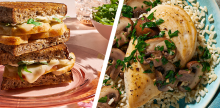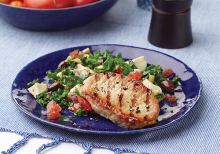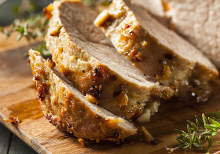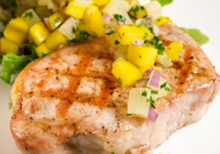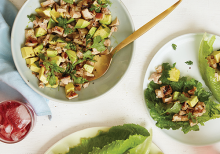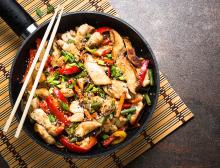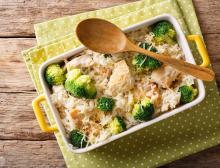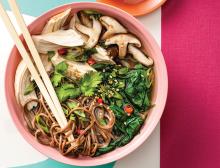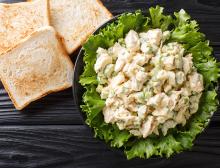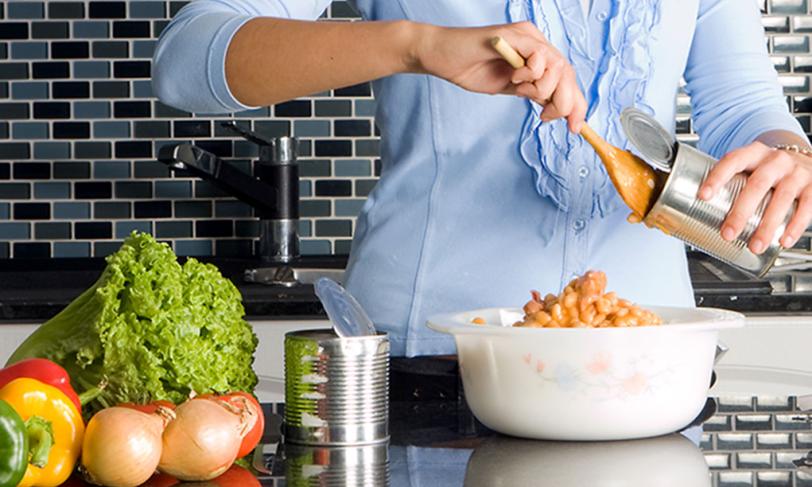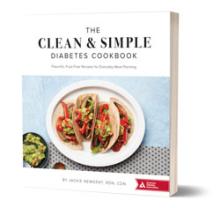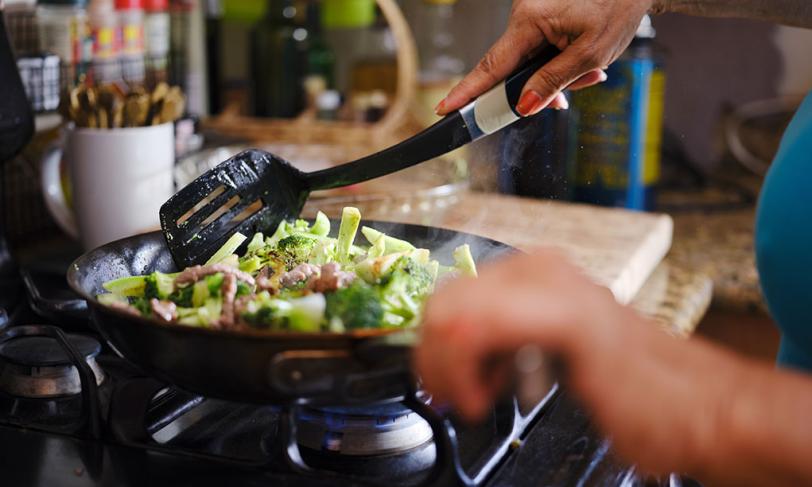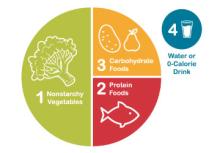Pumpkin spice usually takes the spotlight when the weather starts to cool, but fall also ushers in apple season! You’ll find tons of varieties in the store right now, and maybe you’ll even have the chance to go apple picking. We’ve collected our favorite fall apple recipes for any time of day (not just dessert!) to take advantage of an abundance of seasonal apples.
Entrees
1. Pecan-Crusted Pork Tenderloin with Apple and Onions
Sweet apples, savory onions, and crunchy pecans create a tasty entrée that is sure to please! And, everything comes together quickly making this a perfect weeknight meal.
2. Creamy Chicken Apple Salad
Diced apples add sweetness and crunch to this lighter chicken salad. The trick to keeping chicken salad light is to replace half or more of the mayonnaise with plain yogurt!
3. Spiced Turkey Breast with Apple Chutney
A dry rub of citrus and warm spices gives this roasted turkey irresistible fall flavors, perfect for your Thanksgiving table! A simple apple chutney adds a touch of sweetness that perfectly complements the spice turkey.
4. Power Lunch Salad
This is a great example of how a salad can be a meal on its own—it’s packed with protein, vegetables, and healthy fat. Great for meal prepping or a simple work-from-home lunch.
Side Dishes
5. Braised Cabbage with Apples
This budget-friendly side dish pairs seasonal apples with red cabbage. Serve alongside a simple meat entrée like these Apple Mustard Pork Chops.
6. Apple Walnut Salad
This light and fresh salad is packed full of fall flavors. It would make a great addition to a Thanksgiving table to add more fresh vegetables to the meal.
7. Kale Apple Slaw
You can switch up the vegetables in this slaw by using chopped spinach, green cabbage, and shredded carrots. Pair with Easy Beef Chili for a cozy meal on a cool fall evening.
8. Apple, Beet, and Carrot Slaw with Blood Orange Vinaigrette
This kid-friendly side dish has a lovely sweet, citrus flavor, but it’s also packed with vegetables. Pair with these Chicken Caesar Salad Wraps for a simple lunch.
Breakfast
9. Apple Walnut French Toast
Baking French toast is healthier than pan-frying, and it makes this breakfast dish super simple. Fresh apples and walnuts add crunch, and a hint of maple syrup brings it all together.
10. Apple Pie Yogurt Parfait
Enjoy the flavors of the all-American dessert, apple pie, in a healthy, balanced breakfast parfait. These are great for meal prepping, just store the granola separately so it stays crunchy.
Snacks
11. Pumpkin Apple Protein Bars
Freeze these bars in individual snack size bags and grab one on your way to the gym to have as a snack after a good workout! Be sure to use canned pumpkin, not pumpkin pie filling which has extra sugar added to it.
12. Baked Apple Chips
These homemade apple chips need just two ingredients—apple slices and cinnamon—and no added sugar!
13. Peanut Butter, Cranberry, and Walnut Apple Slices
Apples and peanut butter are a perfect kid-friendly. Take it to the next level by adding chopped nuts, coconut flakes, and dried fruit!
Dessert
14. Maple Apples
Sautéing apples caramelizes their natural sugars creating a rich, sweet flavor. These apples are tossed in a low sugar syrup made from apple cider and sugar-free maple syrup for a delicious, diabetes-friendly dessert.
15. Ronaldo’s Apple Pie
This “apple pie” recipe from Chef Ronaldo Linares ditches the buttery crust without sacrificing any of the flavor of a classic apple pie.
16. Mini Apple Chimichanga
This hand-held apple fritter is easy to make. Whole wheat tortillas are filled with a sweet apple filling and baked to perfection.
